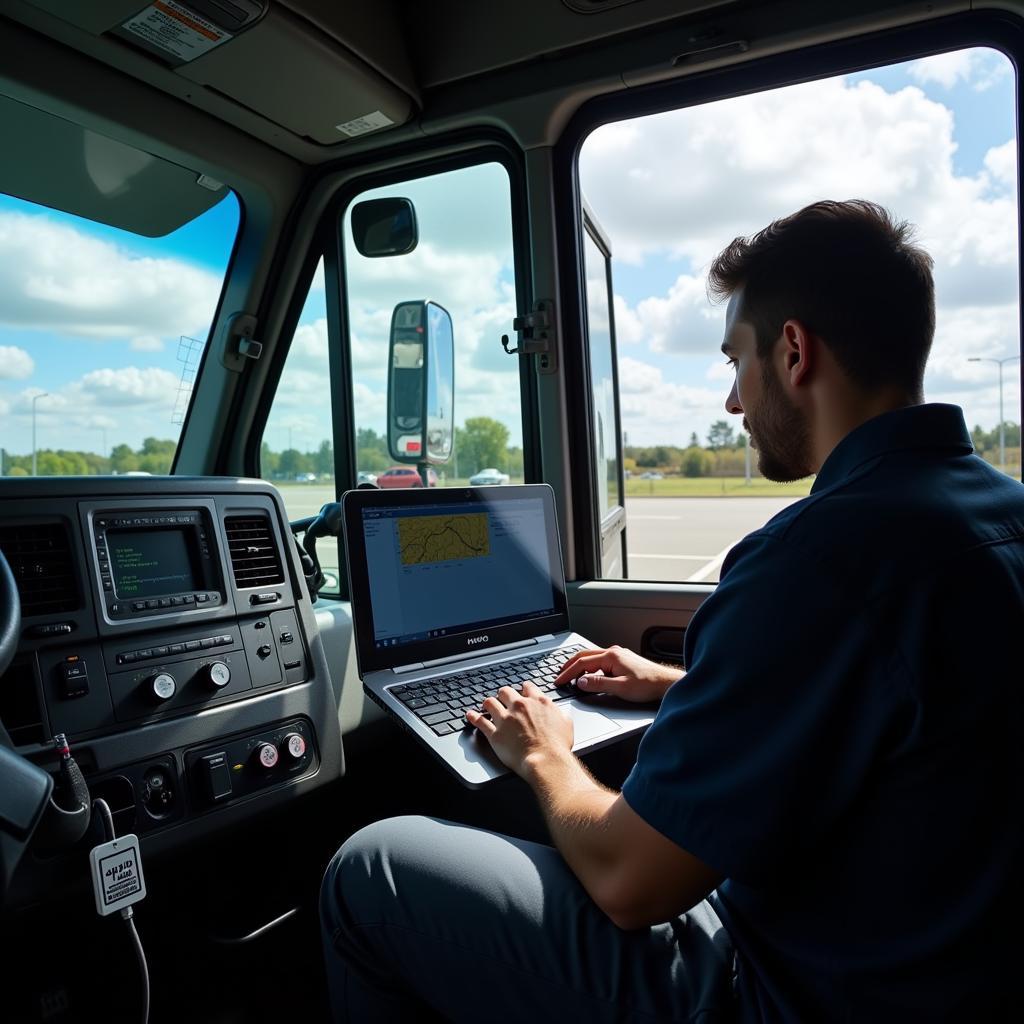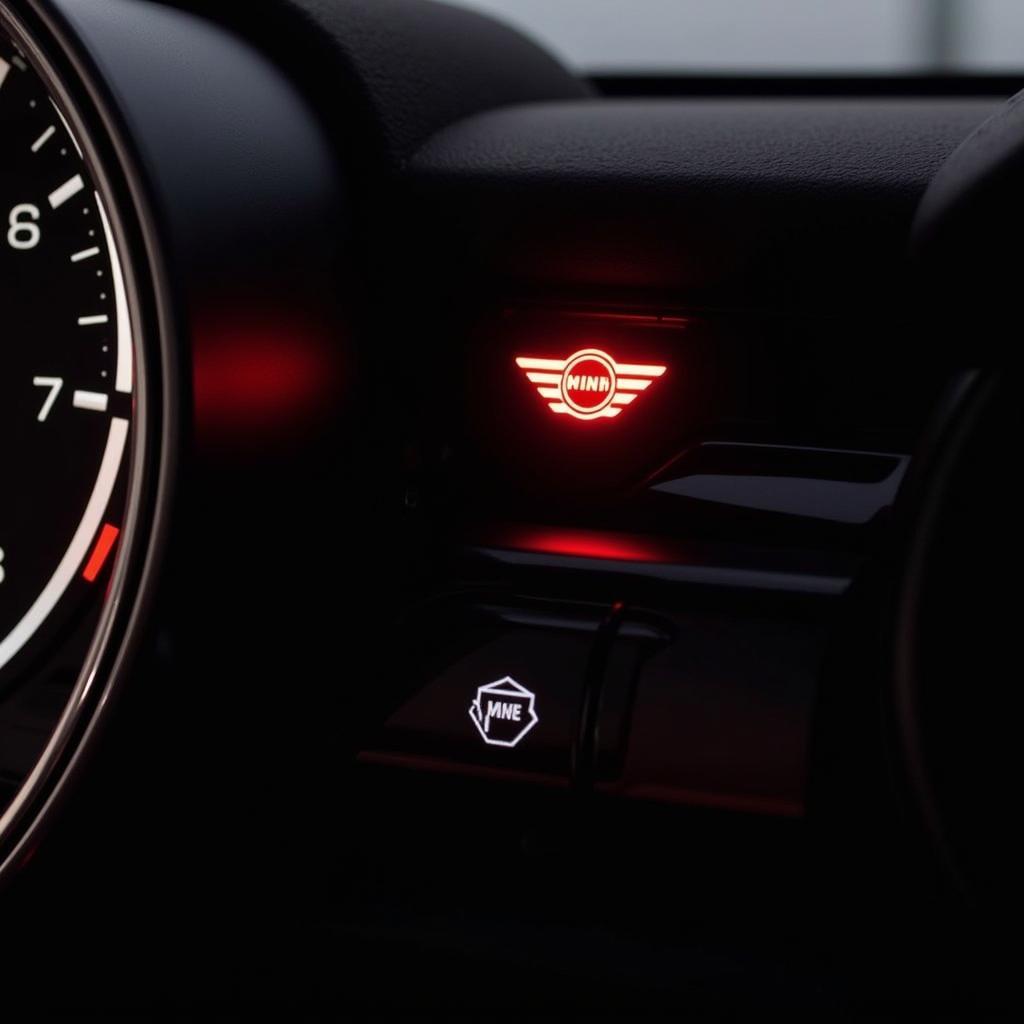The dreaded hino brake warning light can be a source of anxiety for any driver. Whether you’re behind the wheel of a Hino 500 or any other model, understanding what triggers this light and how to address the issue is crucial for safety and peace of mind. This guide provides comprehensive information about the hino brake warning light, its potential causes, and solutions, including remote diagnostics and software programming options.
Understanding the hino brake warning light is the first step to resolving the issue. This light is part of your truck’s braking system and alerts you to potential problems. Ignoring it can lead to serious safety risks and costly repairs down the road. One common problem related to this is the hino truck brake warning light on when i apply the brakes, which we’ll discuss in detail later. You can find more information on Hino 500 brake warning light issues and general hino brake warning solutions online.
Common Causes of the Hino Brake Warning Light
Several factors can trigger the hino brake warning light. Some of the most common causes include:
- Low Brake Fluid: This is often the most common culprit. A leak in the brake lines or worn brake pads can lead to low brake fluid levels.
- Worn Brake Pads: Brake pads wear down over time, eventually triggering the warning light. If you suspect this is the issue, it’s important to replace them promptly.
- Faulty Brake Sensor: The brake sensor monitors the brake system and alerts the driver to any issues. A malfunctioning sensor can trigger the warning light even if there’s no actual problem with the brakes.
- Issues with the ABS System: The Anti-lock Braking System (ABS) is a critical safety feature. Problems with the ABS can illuminate the brake warning light, often accompanied by the ABS warning light.
- Parking Brake Engaged: Sometimes, the simplest explanation is the correct one. Ensure the parking brake is fully released.
For more information regarding specific brake pad issues, please refer to our guide on Hino brake pad warning light.
Troubleshooting the Hino Brake Warning Light
If your hino brake warning light comes on, follow these steps:
- Check the Parking Brake: Ensure the parking brake is fully disengaged.
- Inspect Brake Fluid Level: Check the brake fluid reservoir. If the level is low, add brake fluid and check for leaks.
- Inspect Brake Pads: Visually inspect the brake pads for wear. If they appear thin or worn, they need replacing.
- Check for Leaks: Look for signs of brake fluid leaks around the brake lines, calipers, and wheel cylinders.
- Consult a Professional: If you cannot identify the problem, consult a qualified technician. They can perform a thorough inspection and diagnose the issue accurately.
Remote Diagnostics and Software Programming Solutions
Modern technology allows for remote diagnostics and software programming to address certain brake system issues in Hino trucks. This involves connecting your vehicle to a diagnostic tool that communicates with a remote server. Experienced technicians can then analyze the data and identify the root cause of the problem. In some cases, they can even reprogram software modules to fix the issue without requiring a physical visit. This can save time and money, particularly for complex electrical or software-related problems. For example, a problem with the ABS module might be resolved through remote software updates.
 Hino Remote Diagnostics in Action
Hino Remote Diagnostics in Action
The Importance of Addressing the Warning Light Promptly
Ignoring the hino brake warning light can have serious consequences. It can lead to brake failure, increased stopping distances, and even accidents. Addressing the issue promptly not only ensures your safety but also prevents further damage to the braking system, potentially saving you money on costly repairs in the long run. You might also find our article on the yellow brake system warning light helpful in understanding general brake warning light issues.
Conclusion
The hino brake warning light is a critical safety feature. Understanding its potential causes and knowing how to troubleshoot the issue can help keep you safe on the road. Whether it’s a simple fix like adding brake fluid or a more complex issue requiring remote diagnostics and software programming, addressing the problem promptly is essential. Don’t ignore the warning—your safety and the safety of others depend on it. Regular maintenance and timely repairs are key to preventing brake system problems and ensuring the longevity of your Hino truck.
FAQ
-
What does the hino brake warning light mean? It indicates a potential problem with your Hino truck’s braking system.
-
Is it safe to drive with the hino brake warning light on? No, it’s not safe. You should address the issue immediately.
-
How do I check my Hino truck’s brake fluid level? Locate the brake fluid reservoir and check the fluid level against the markings on the reservoir.
-
Can I fix the hino brake warning light myself? If it’s a simple issue like low brake fluid, you might be able to. However, for more complex issues, consult a professional.
-
What is remote diagnostics for Hino trucks? It’s a method of diagnosing and sometimes fixing problems remotely using specialized software and diagnostic tools.
-
How often should I check my Hino truck’s brakes? It’s recommended to have your brakes inspected at least once a year or as recommended in your owner’s manual.
-
Where can I find more information on the hino truck brake warning light on when i apply the brakes? You can check online resources and forums dedicated to Hino trucks for specific information and solutions. You can also find valuable information about the Hino 500 brake warning light online.

